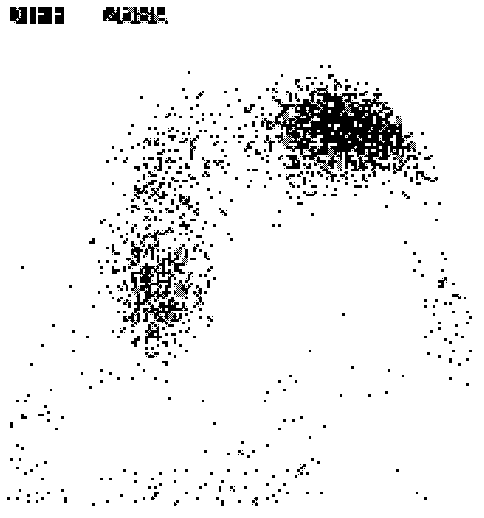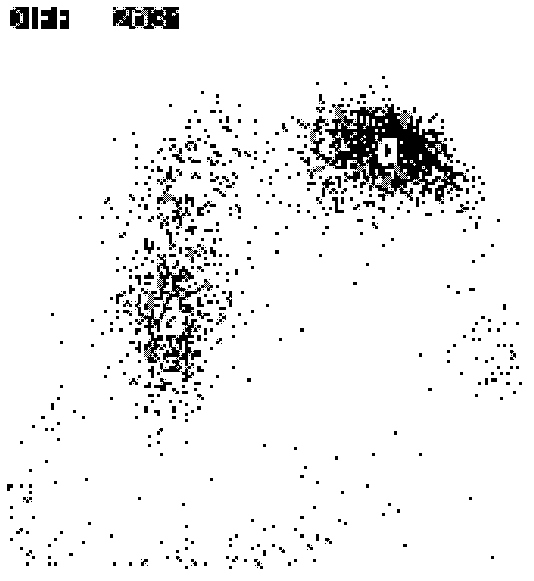Method for automatically classifying particles
A technology of automatic classification and clustering method, which is applied in the field of automatic classification of flow cytometer, can solve the problems of particle classification deviation and slow speed, and achieve the effect of reducing calculation amount, improving efficiency and saving time
- Summary
- Abstract
- Description
- Claims
- Application Information
AI Technical Summary
Problems solved by technology
Method used
Image
Examples
Embodiment approach
[0047] One embodiment of the present invention is: the clustering method adopted in the step C1 is a k-means clustering method, and the k-means clustering method includes the following steps:
[0048] C11. The initial center of k-means clustering adopts a centrosymmetric Gaussian kernel. This Gaussian kernel is suitable for data of any dimension. The Gaussian kernel and the effective data of the image are convolved to obtain a smoothing effect map of this data, and then find Each of its peaks is used as the initial center;
[0049] C12. Calculate the distance between each effective cell or particle and the initial center, and find the cell or particle with the smallest distance;
[0050] C13. Combining the cells or particles into the type of its nearest center;
[0051] C14, calculate the center, repeat the above steps C12, C13;
[0052] C15. Until its central position and the previous central position are less than a small value, the clustering ends.
[0053] An embodiment...
PUM
 Login to View More
Login to View More Abstract
Description
Claims
Application Information
 Login to View More
Login to View More - R&D
- Intellectual Property
- Life Sciences
- Materials
- Tech Scout
- Unparalleled Data Quality
- Higher Quality Content
- 60% Fewer Hallucinations
Browse by: Latest US Patents, China's latest patents, Technical Efficacy Thesaurus, Application Domain, Technology Topic, Popular Technical Reports.
© 2025 PatSnap. All rights reserved.Legal|Privacy policy|Modern Slavery Act Transparency Statement|Sitemap|About US| Contact US: help@patsnap.com



